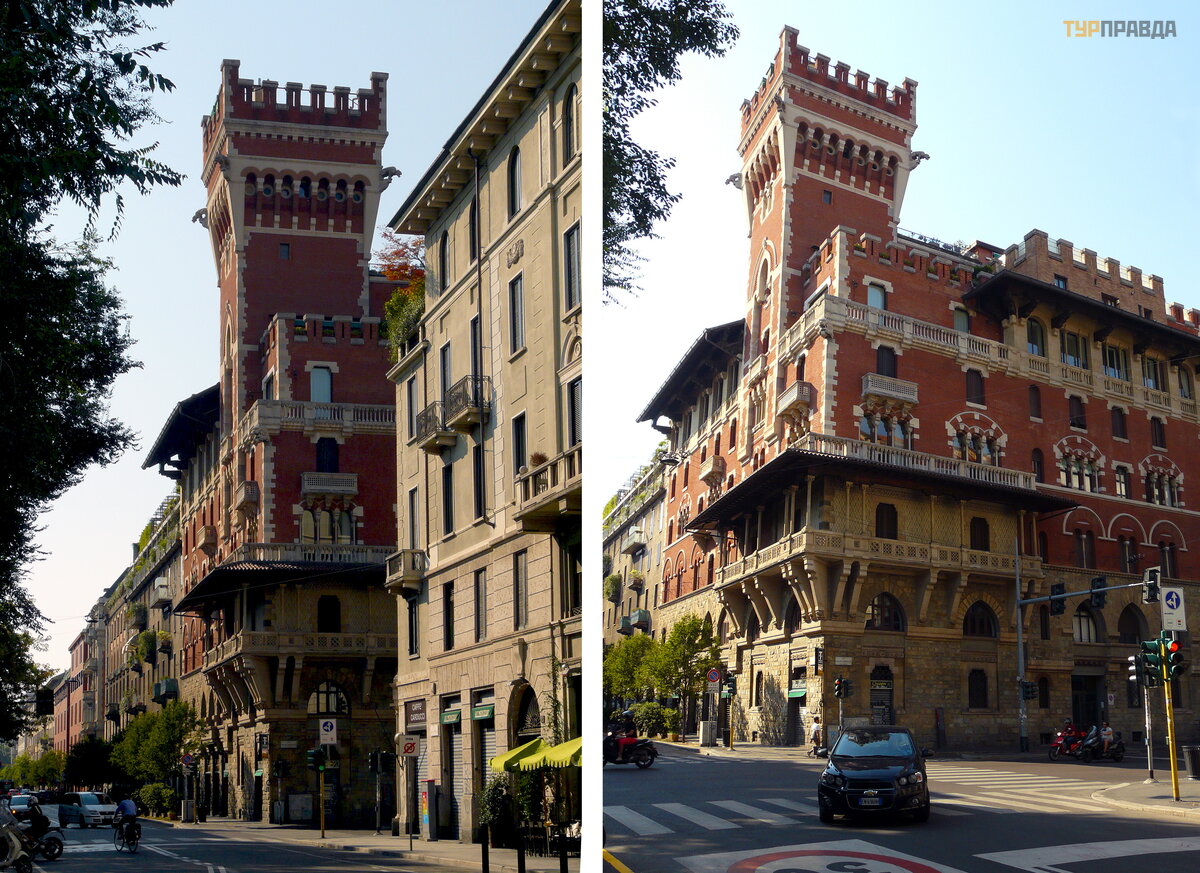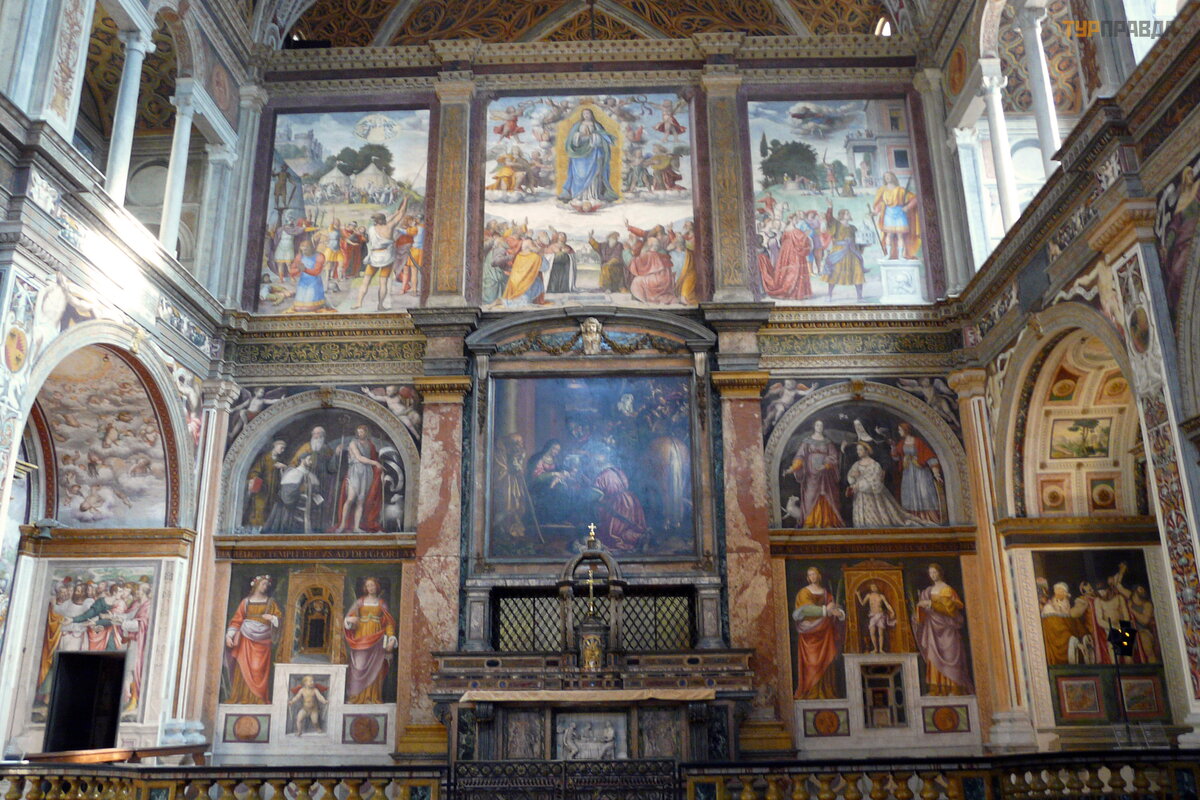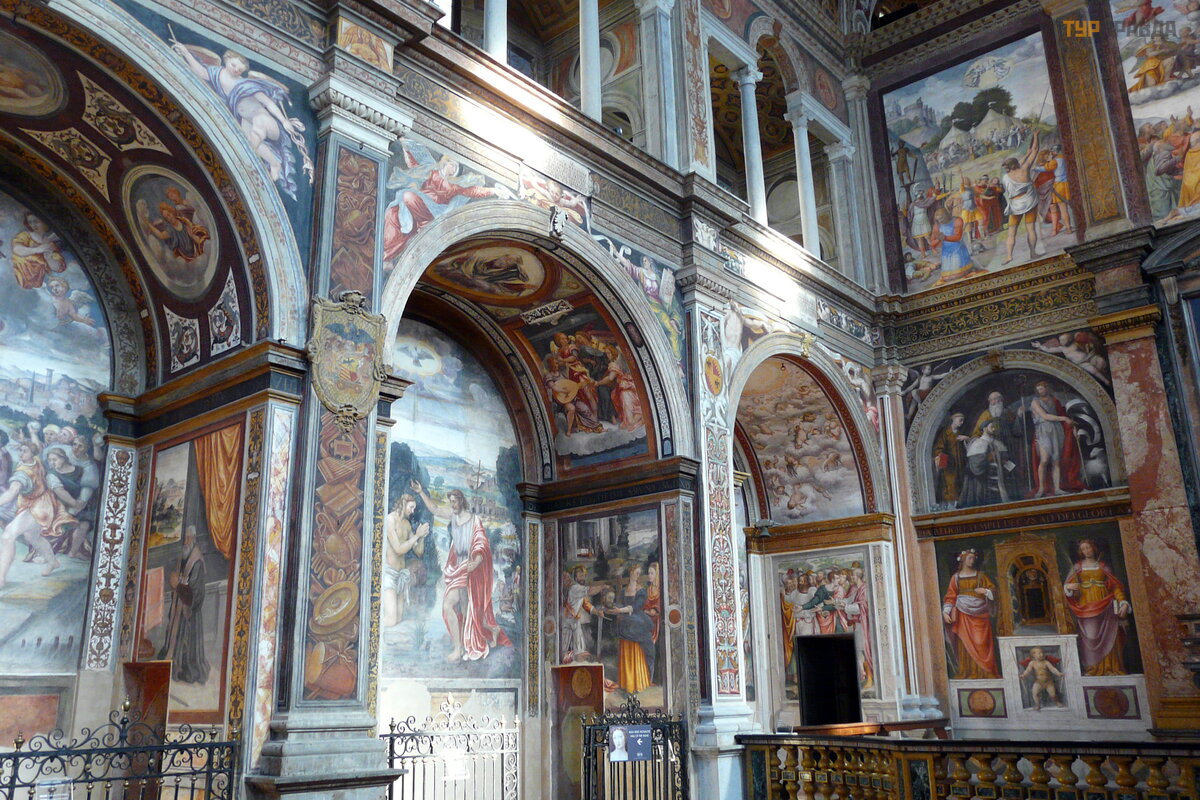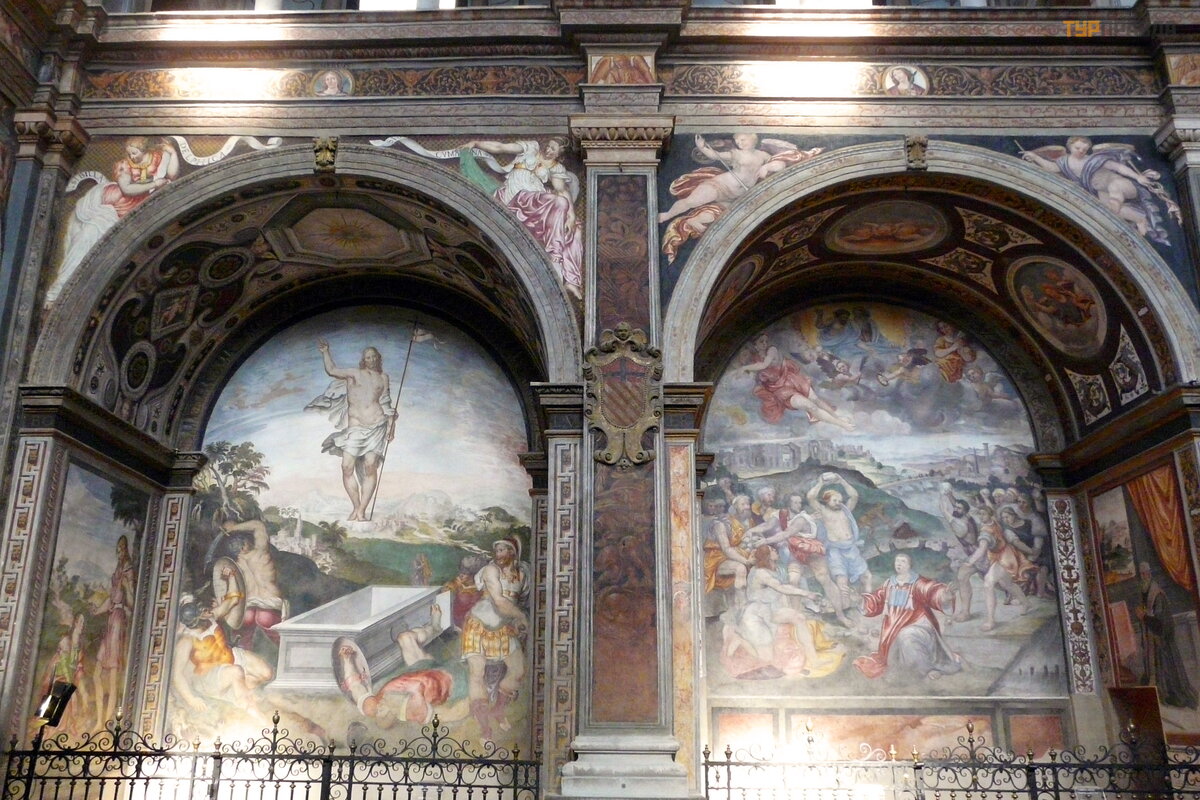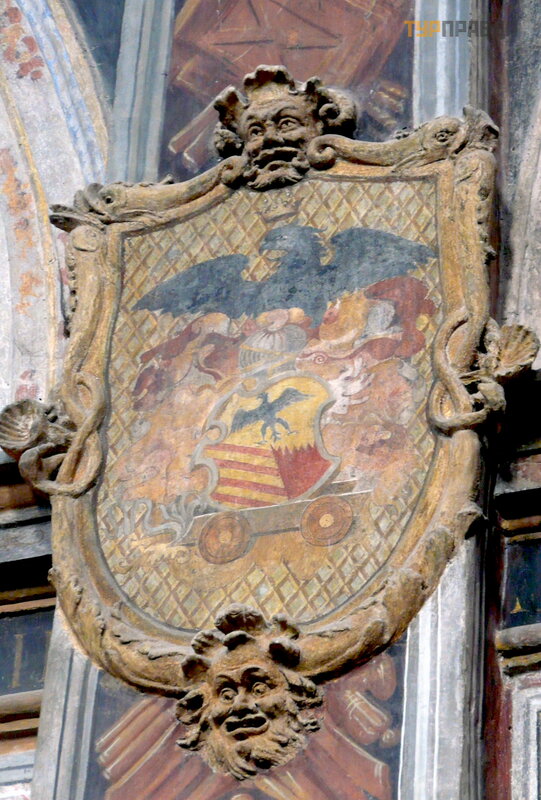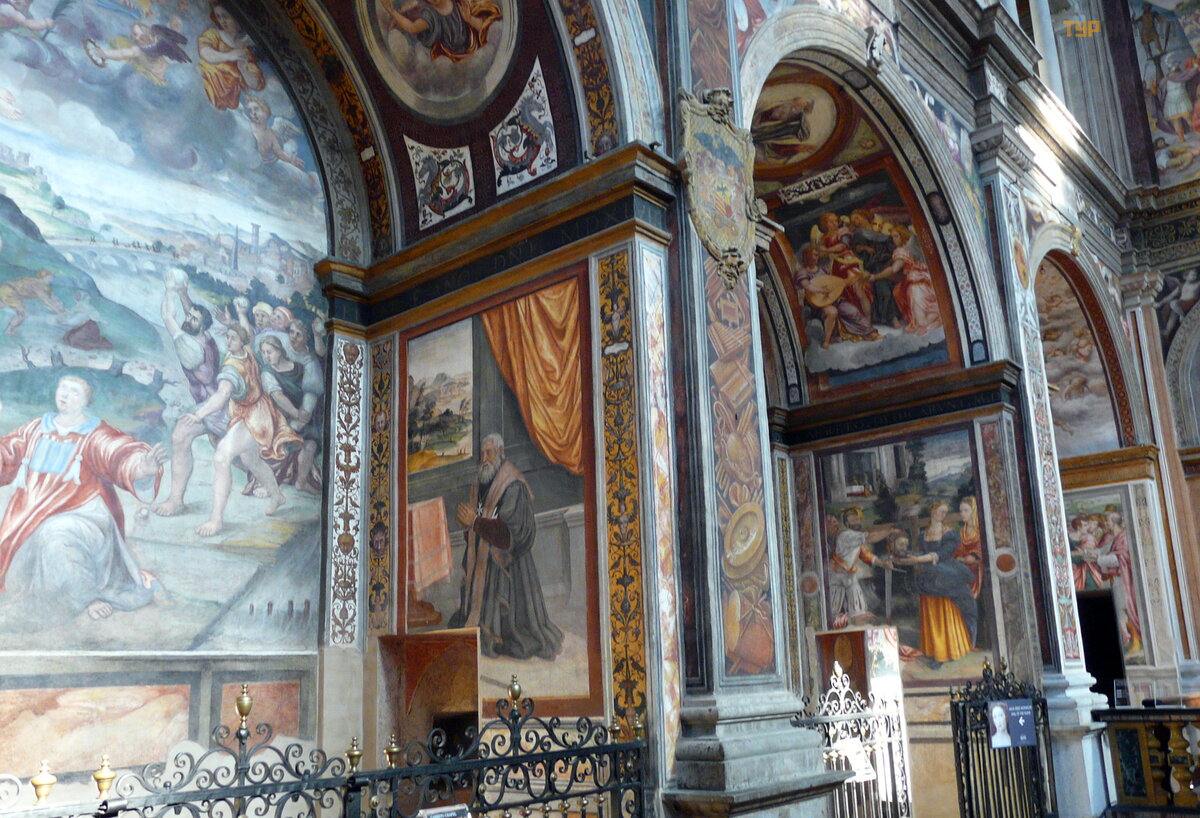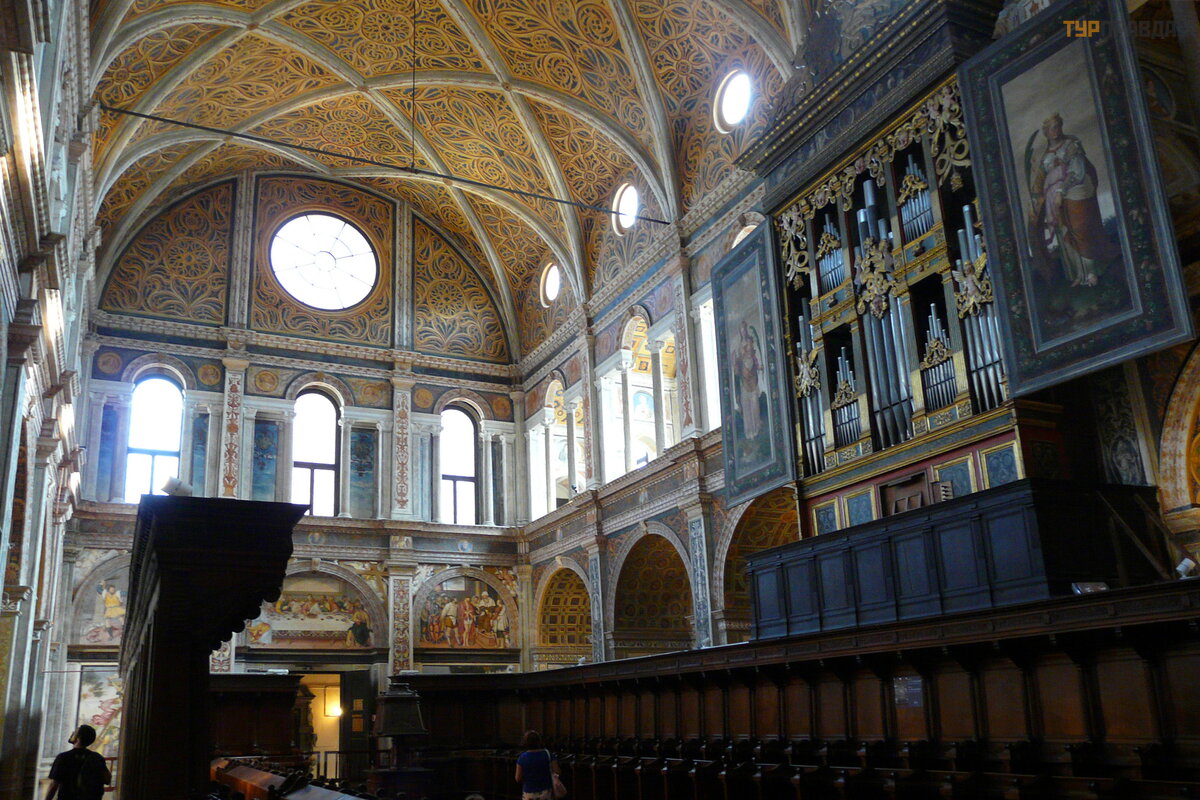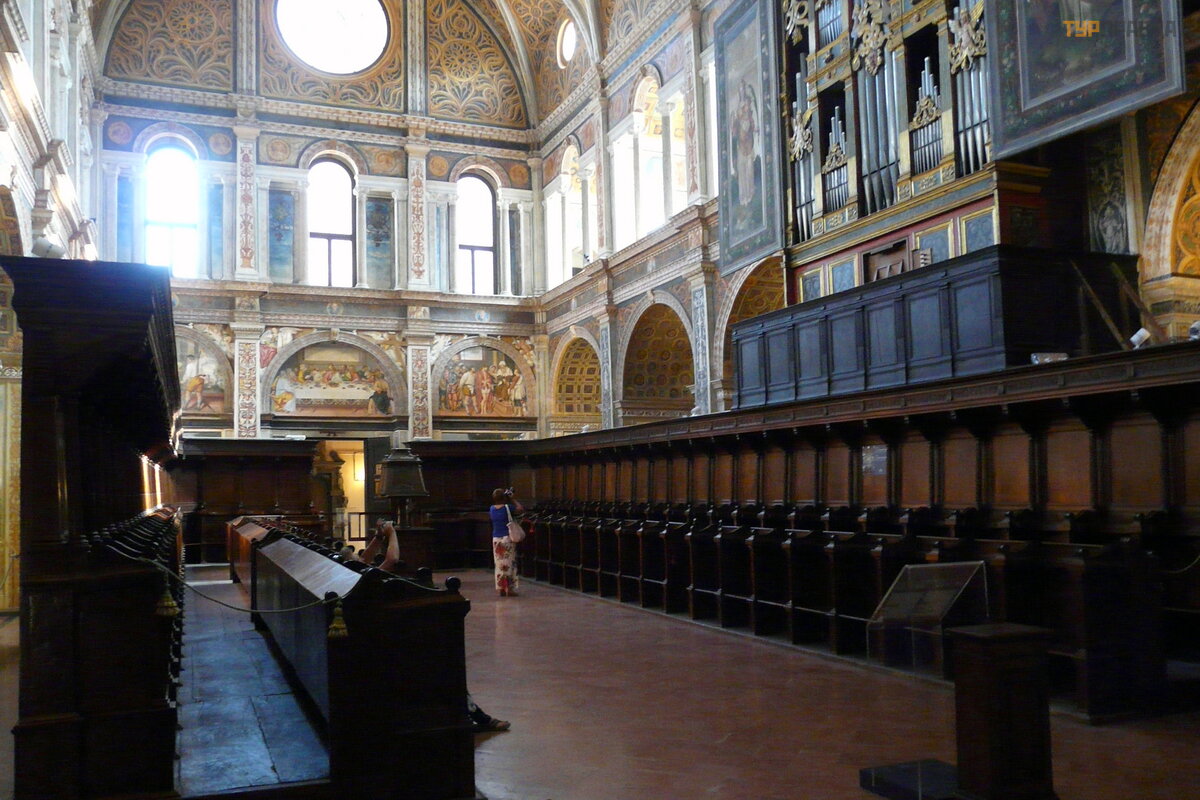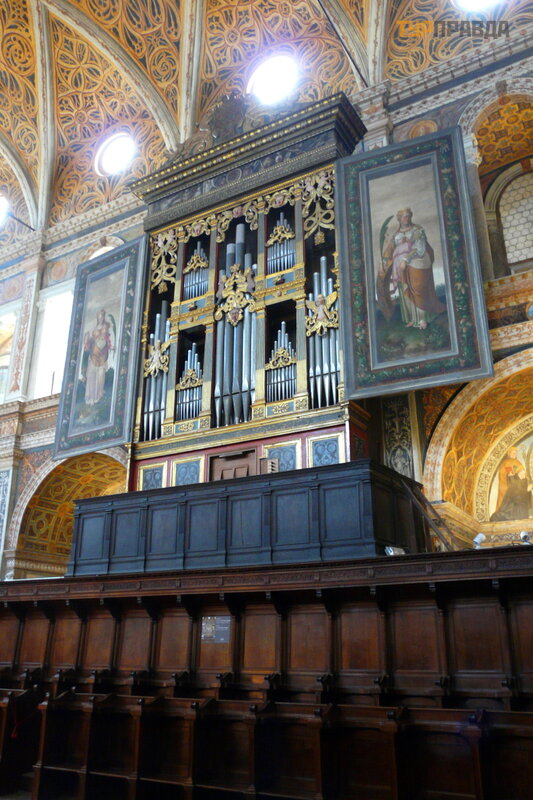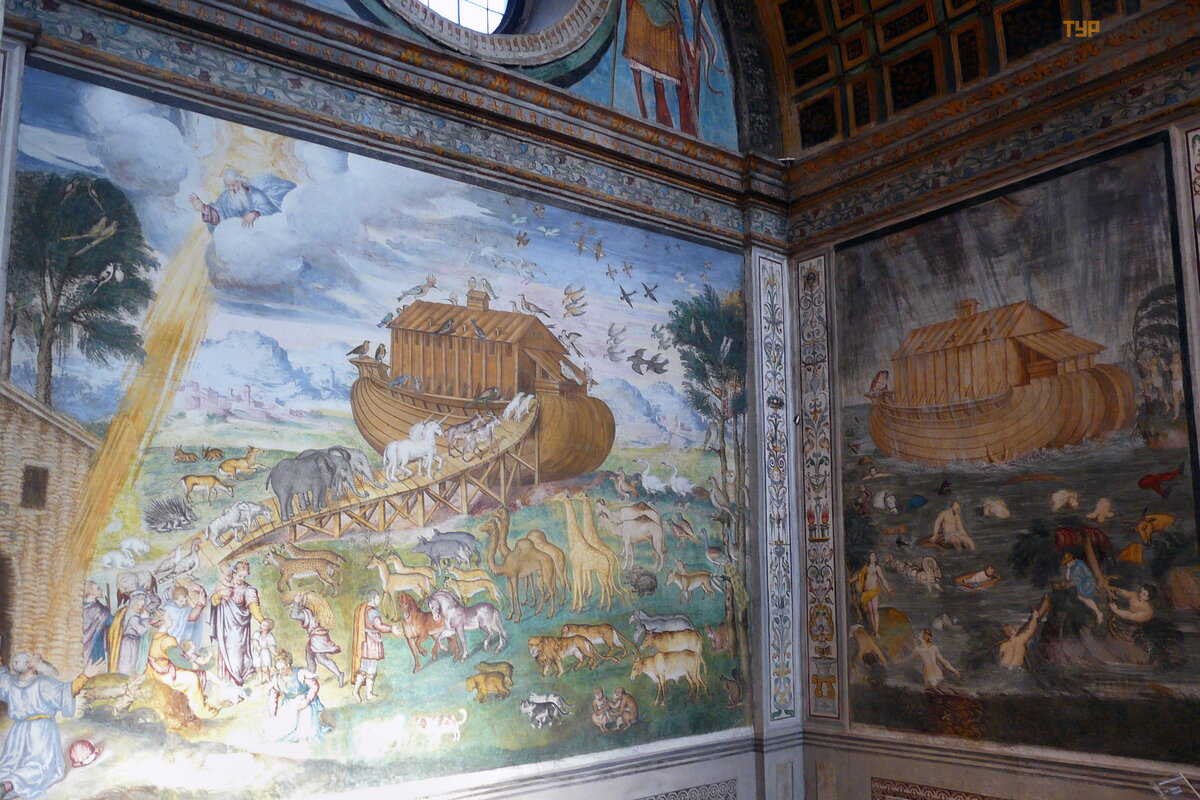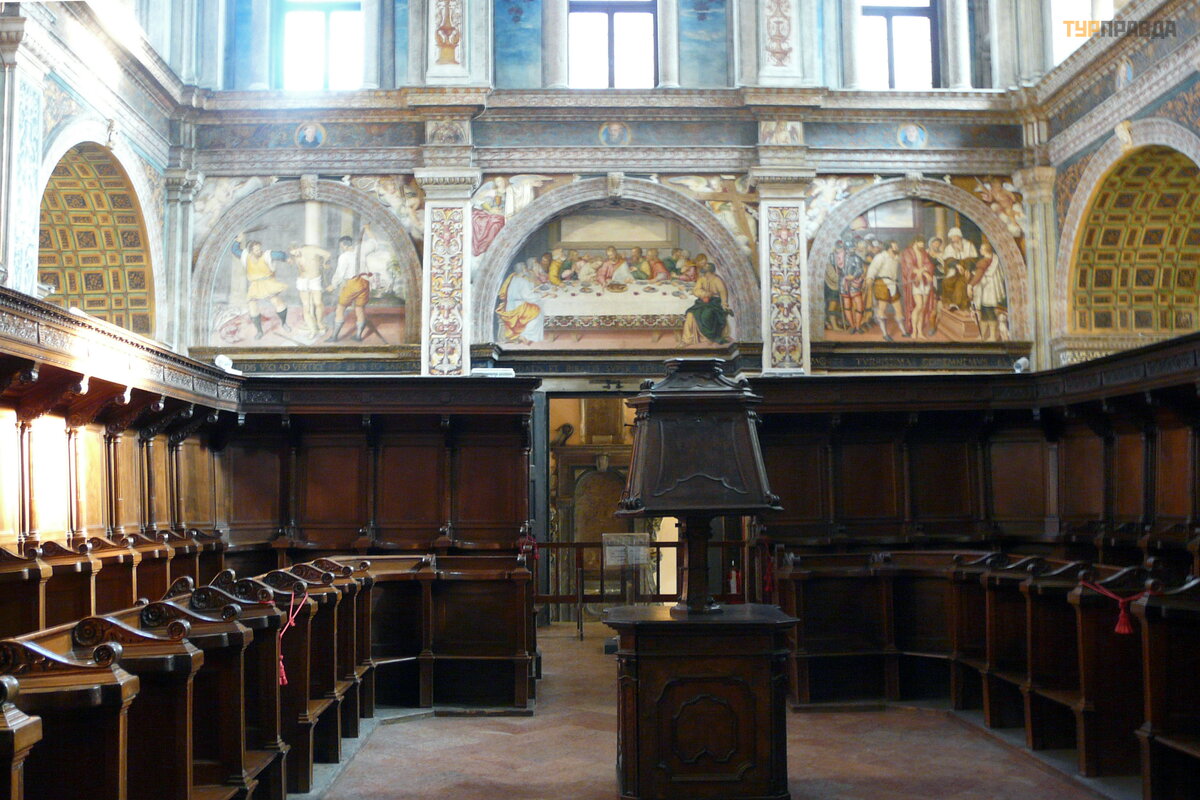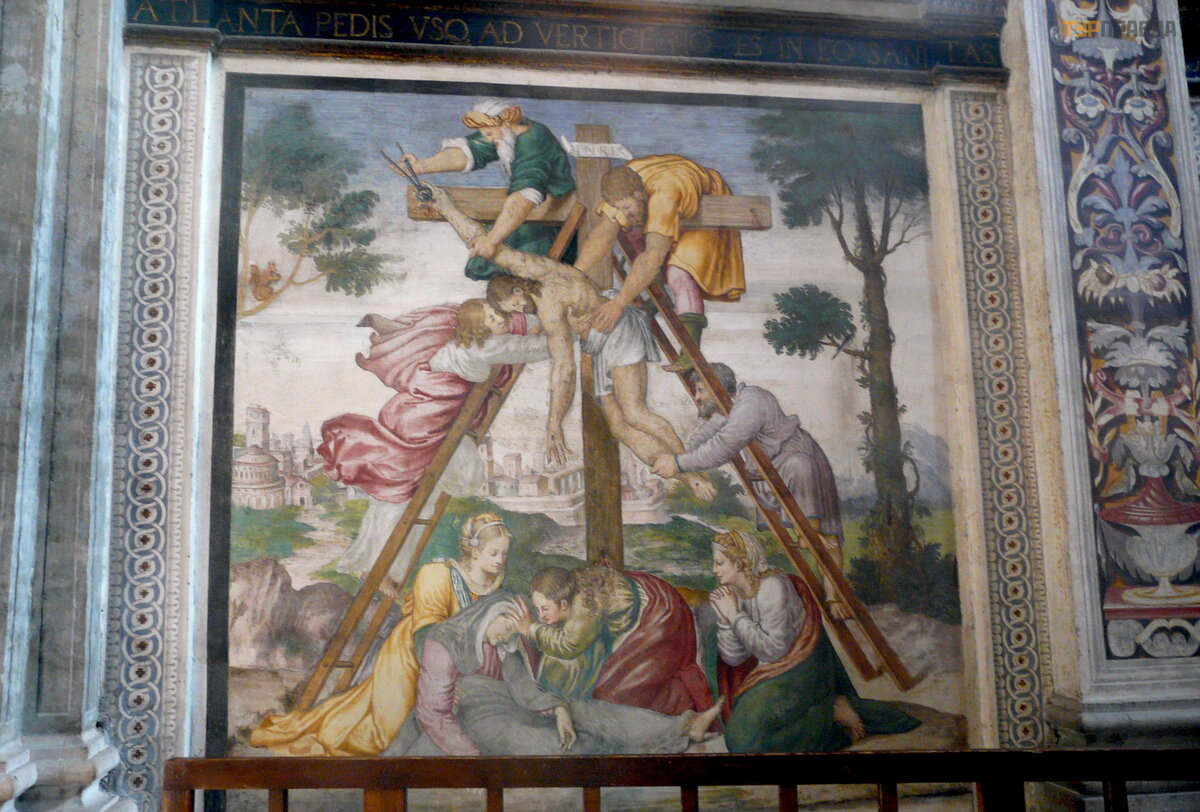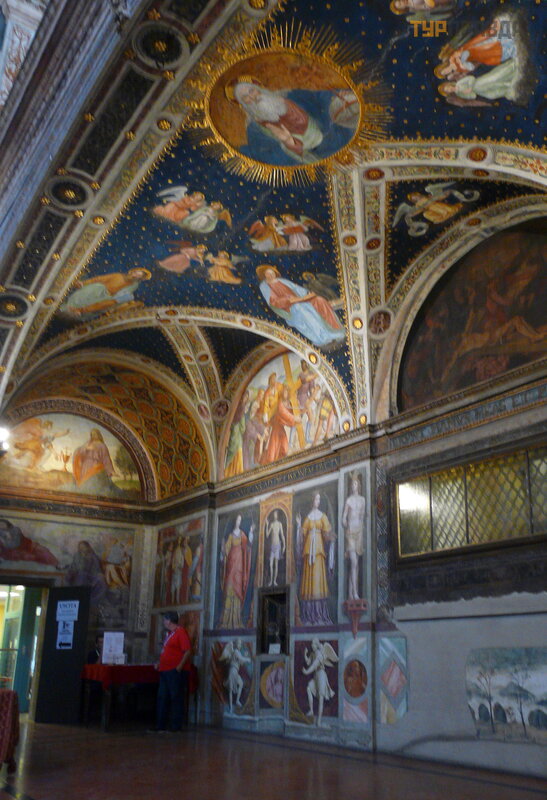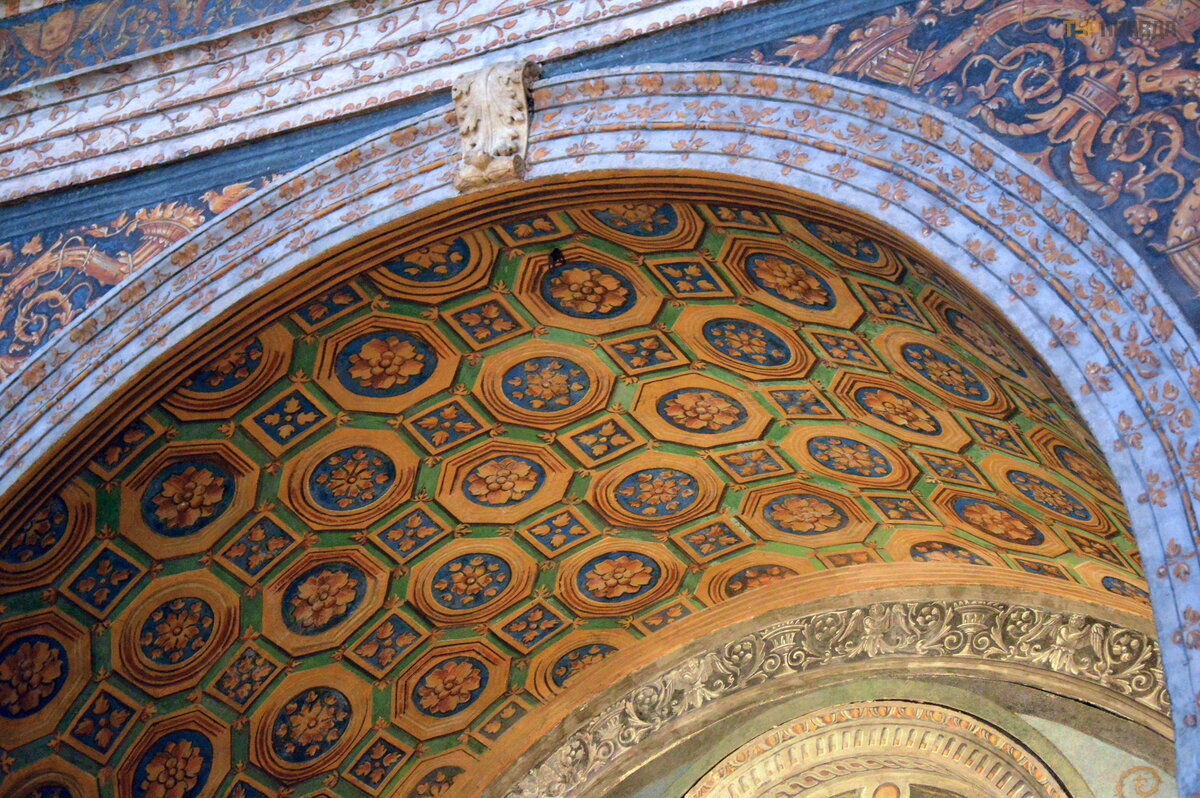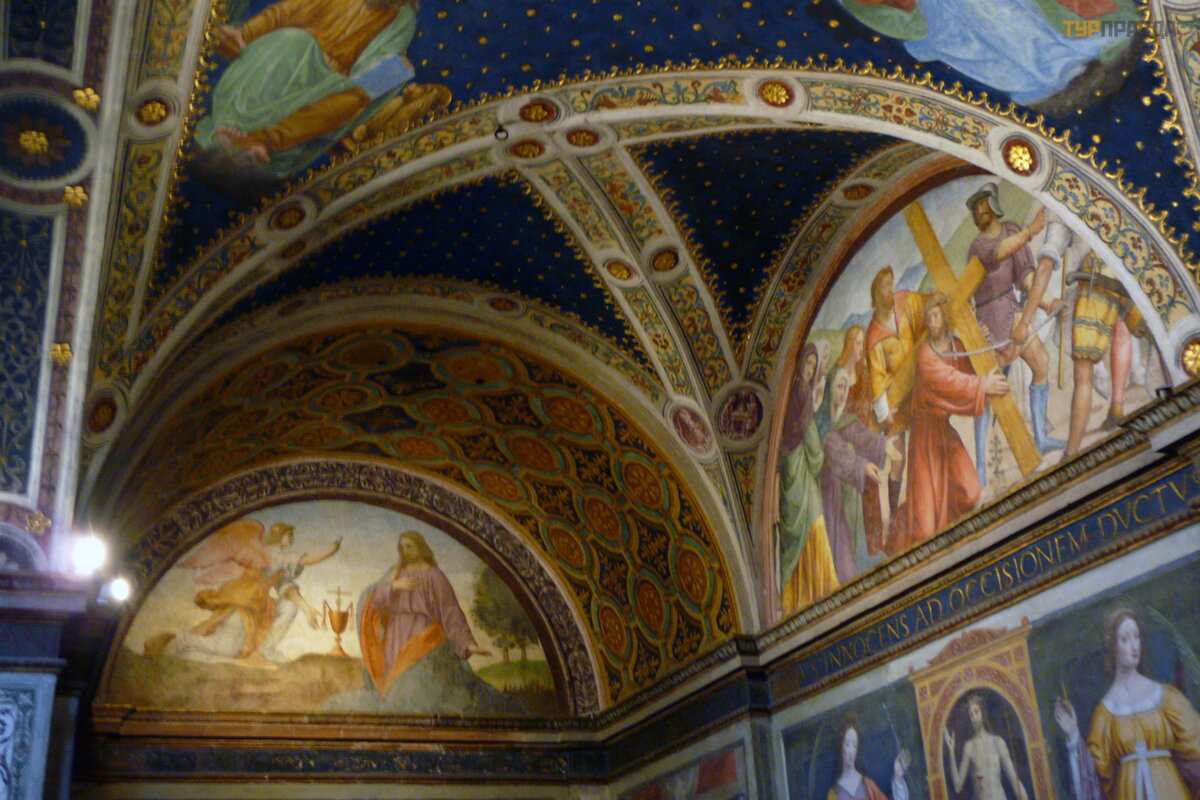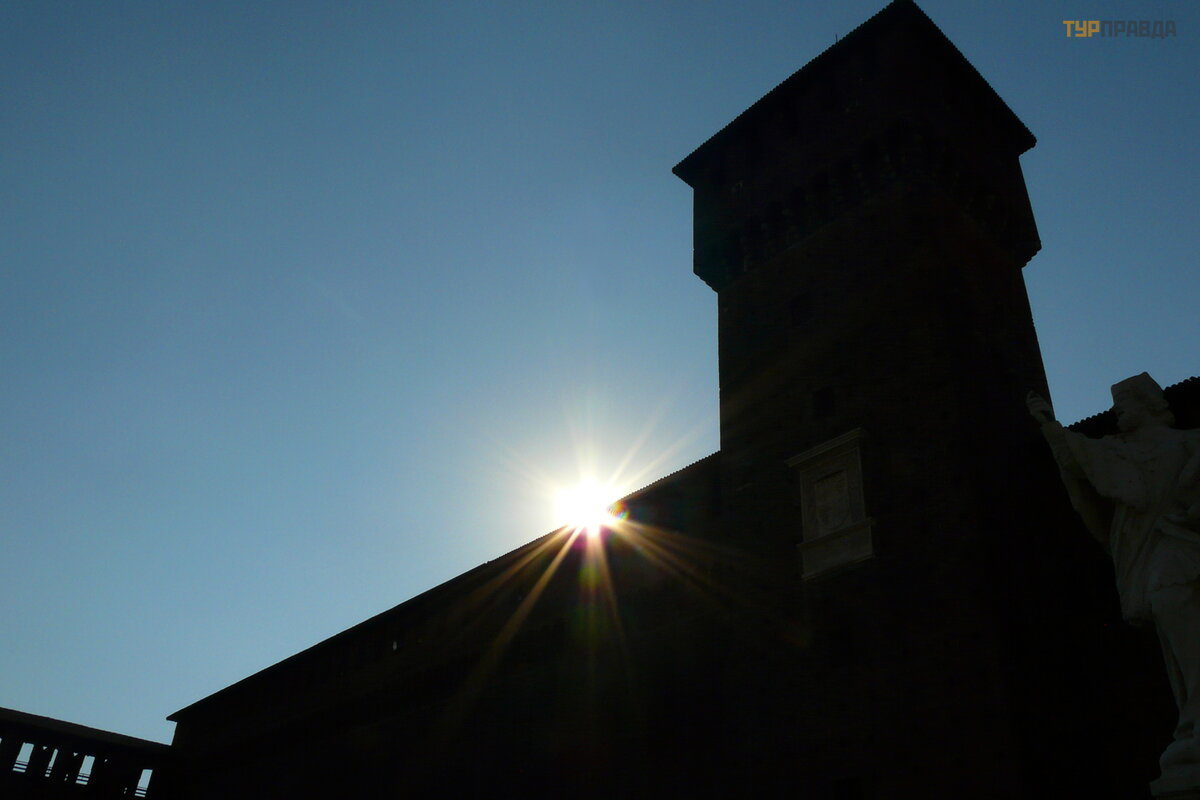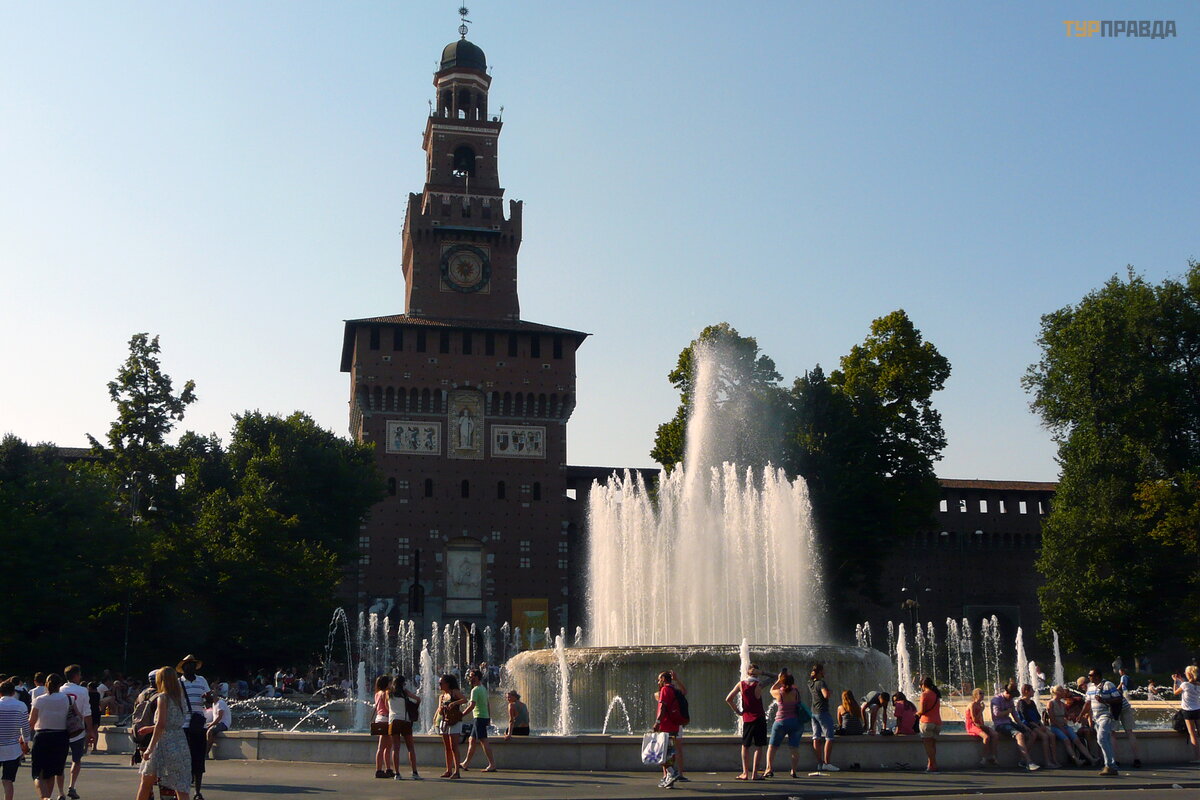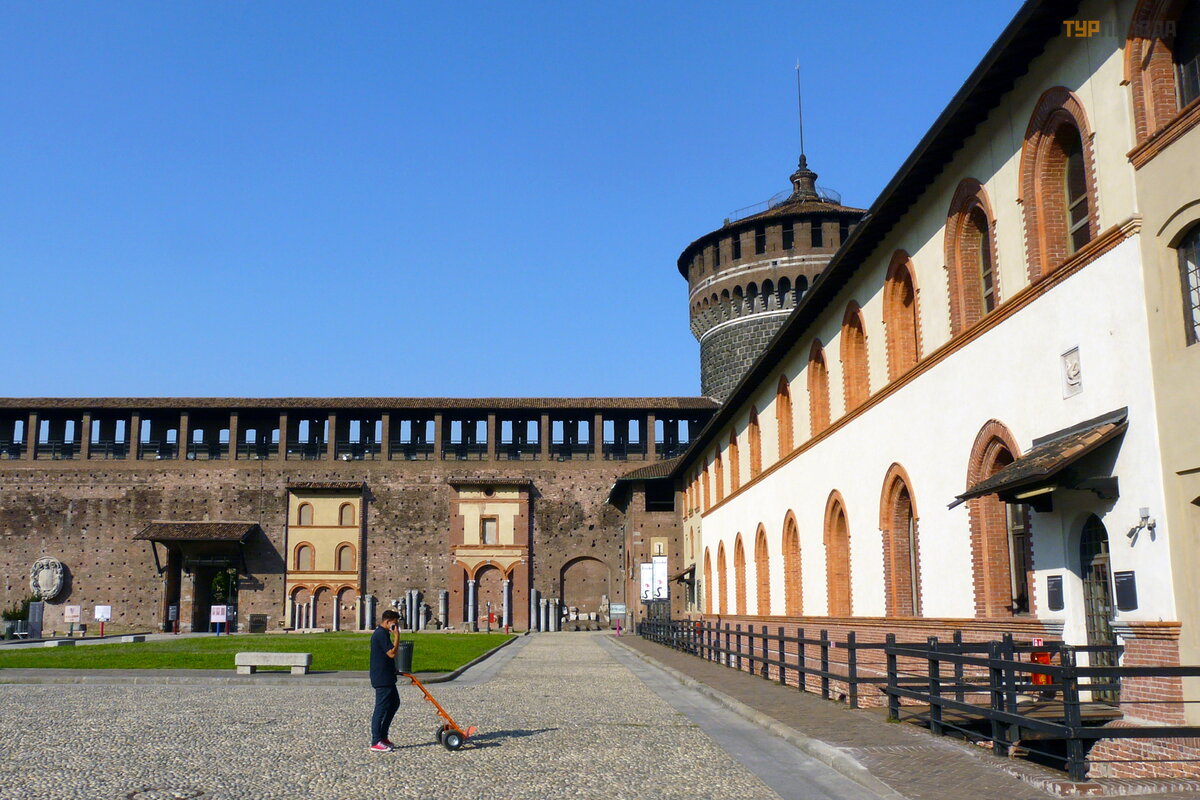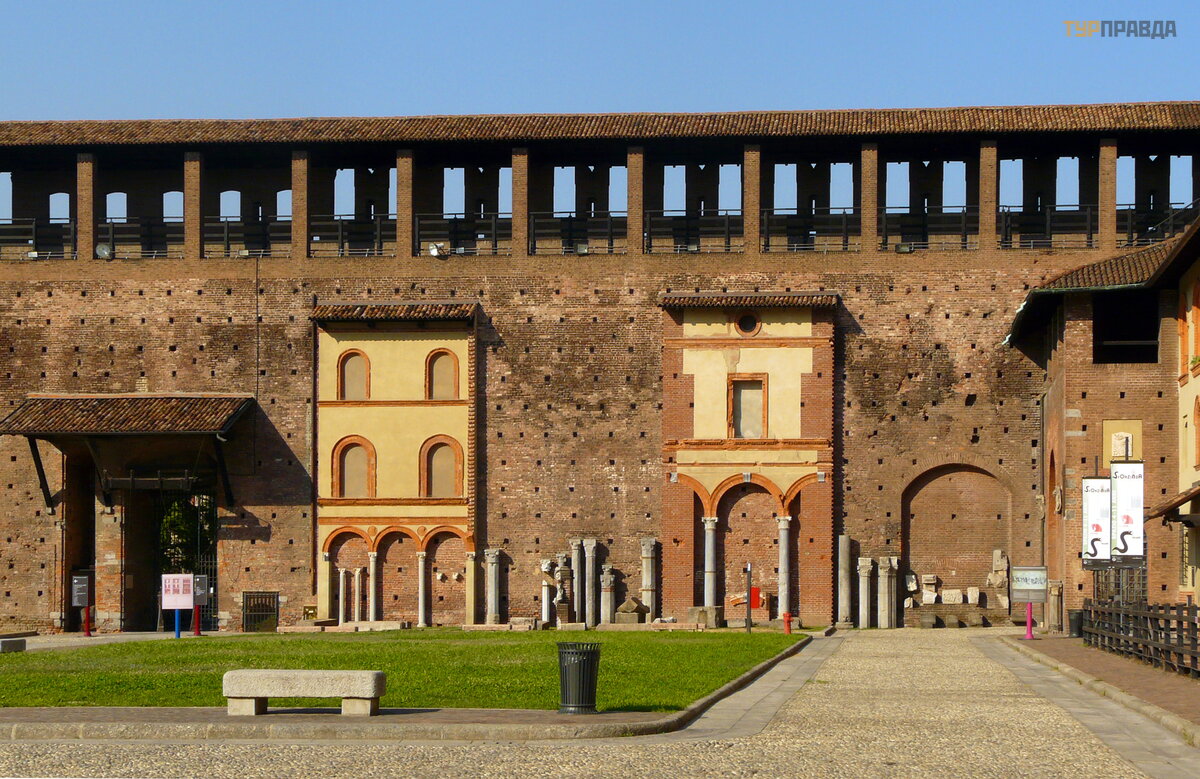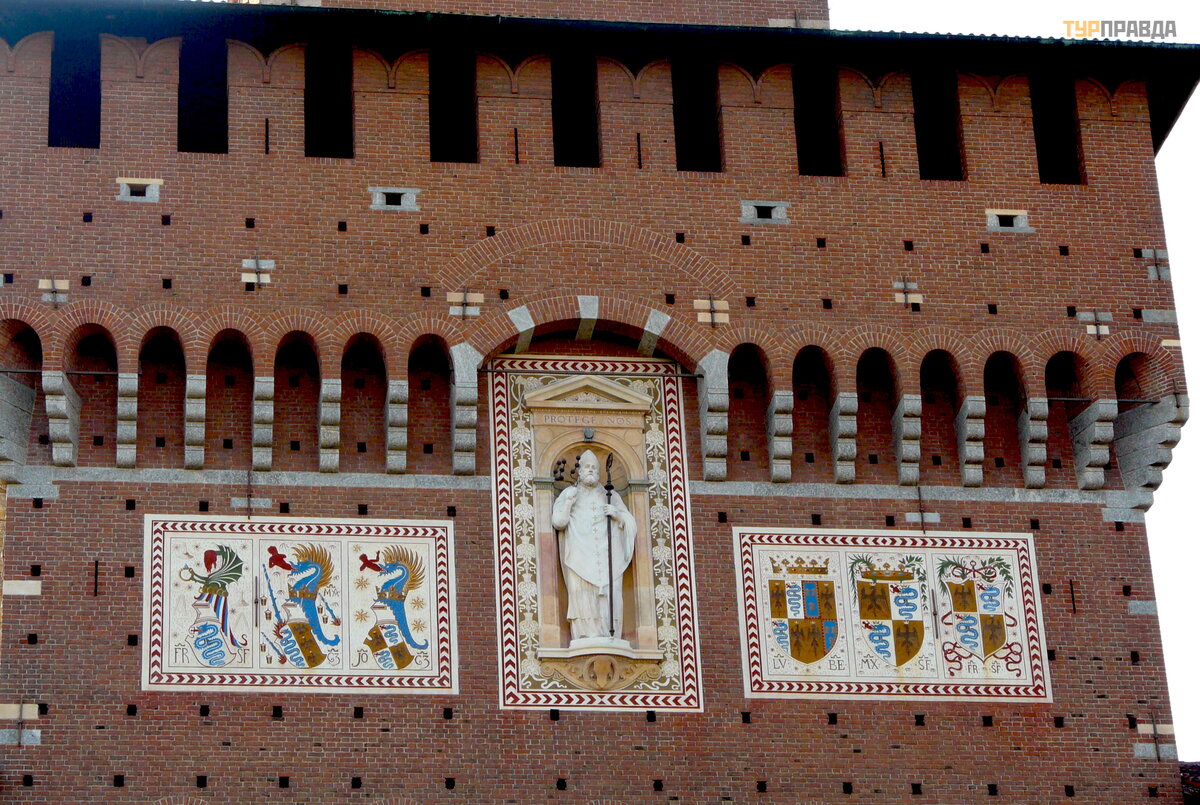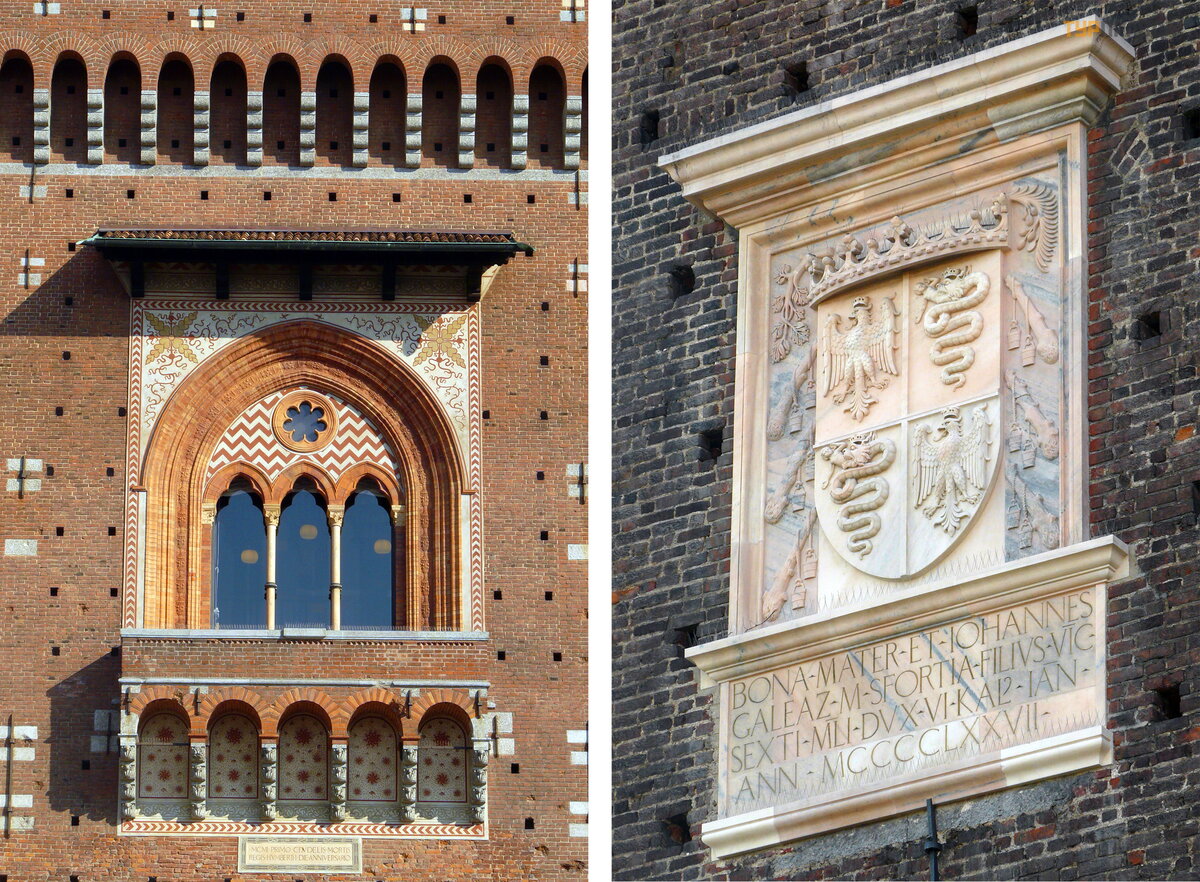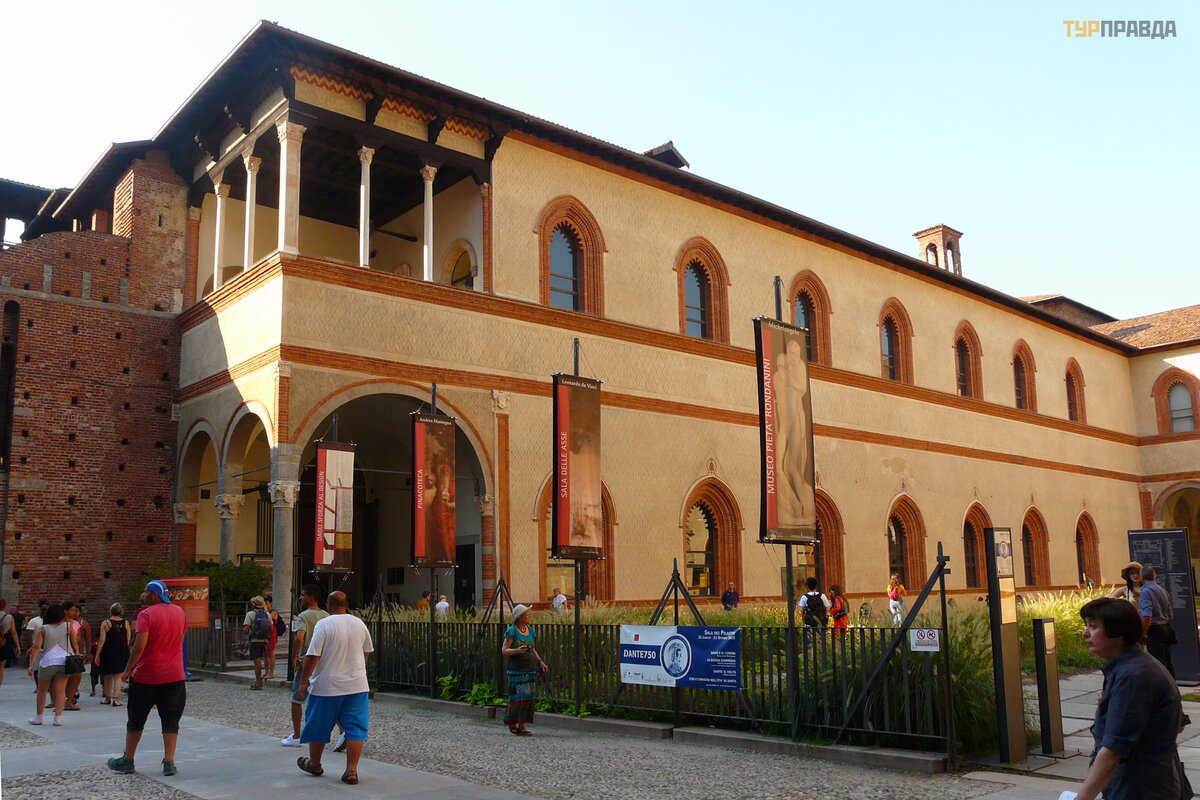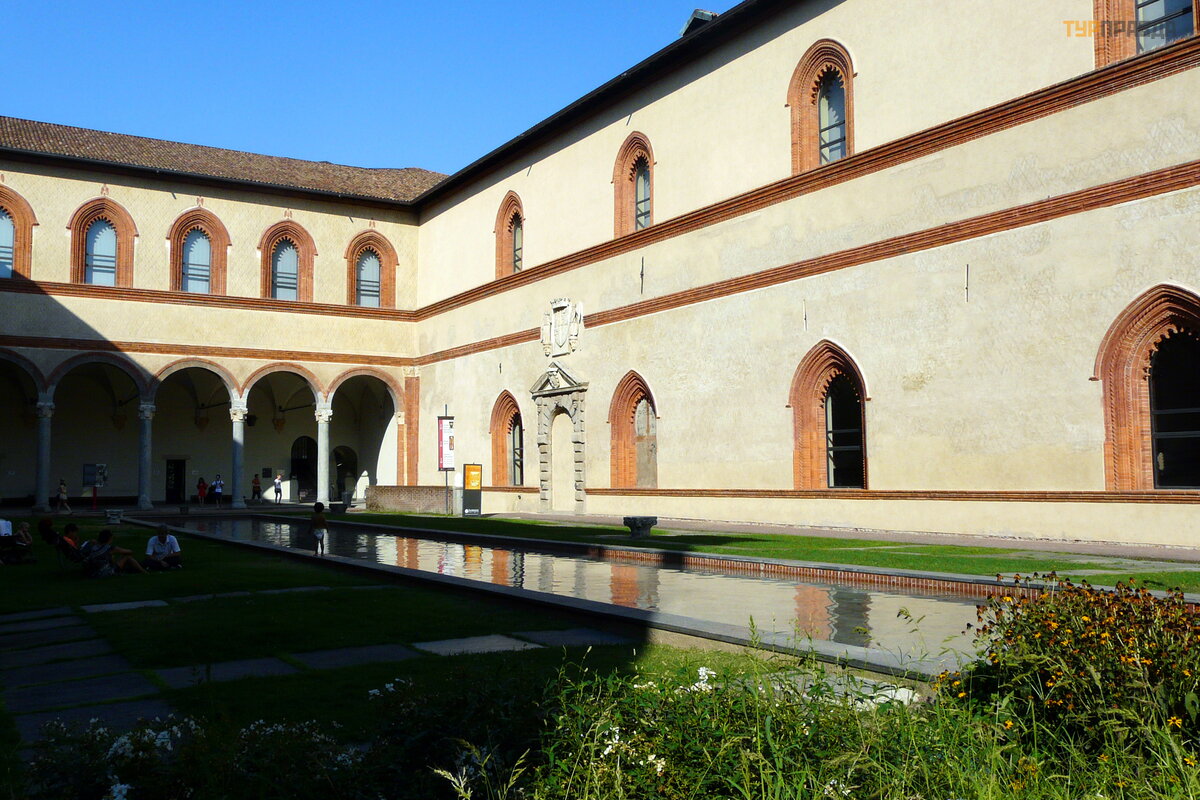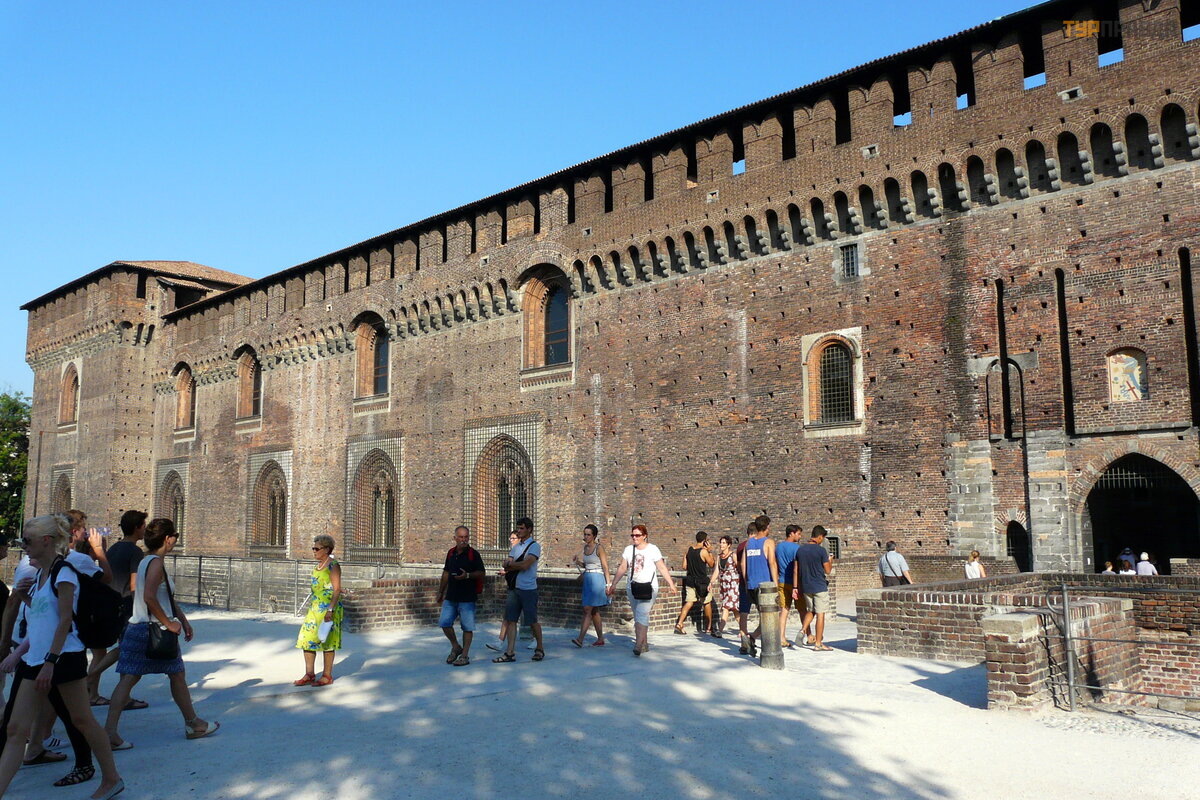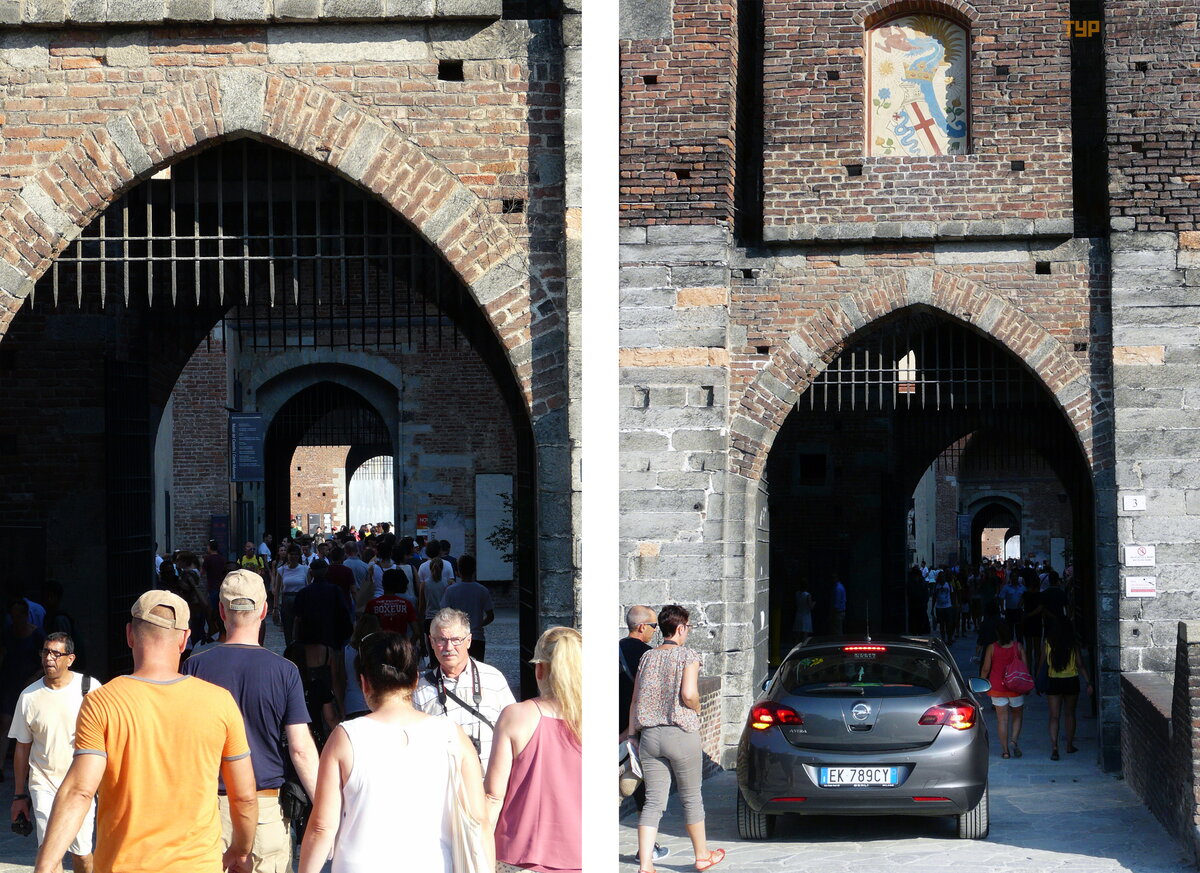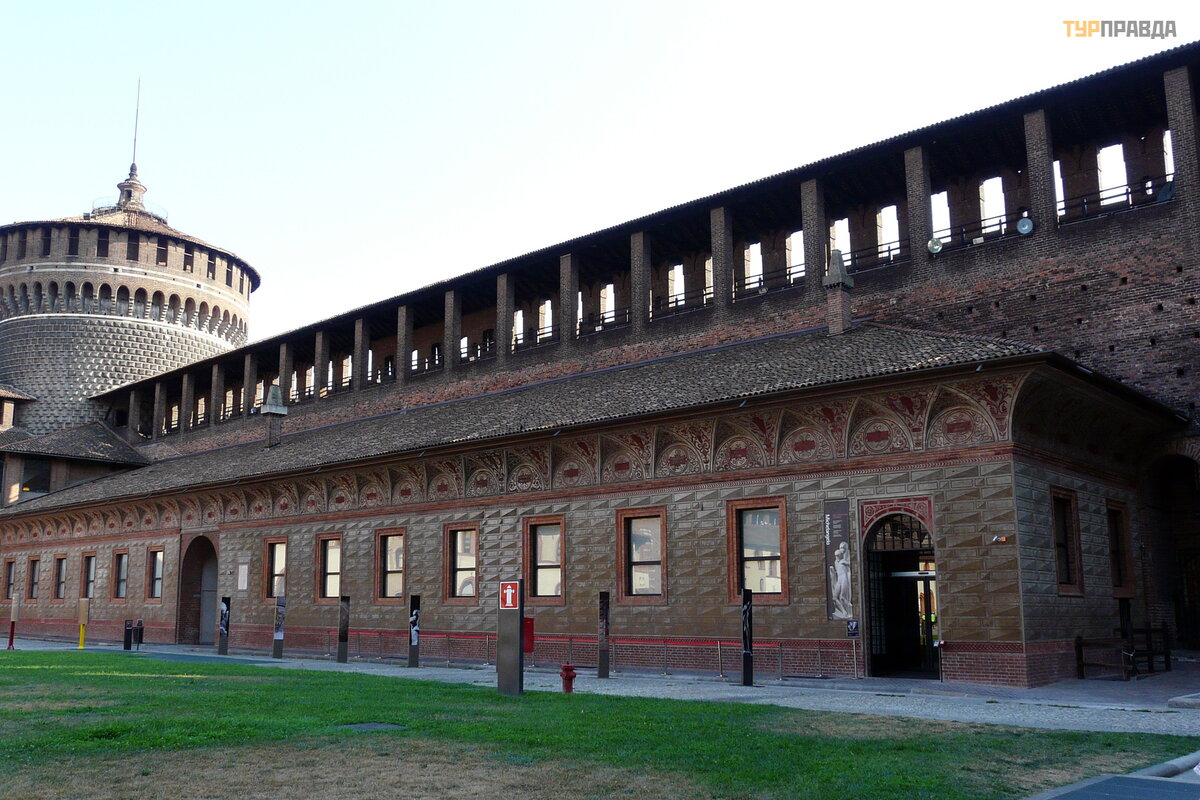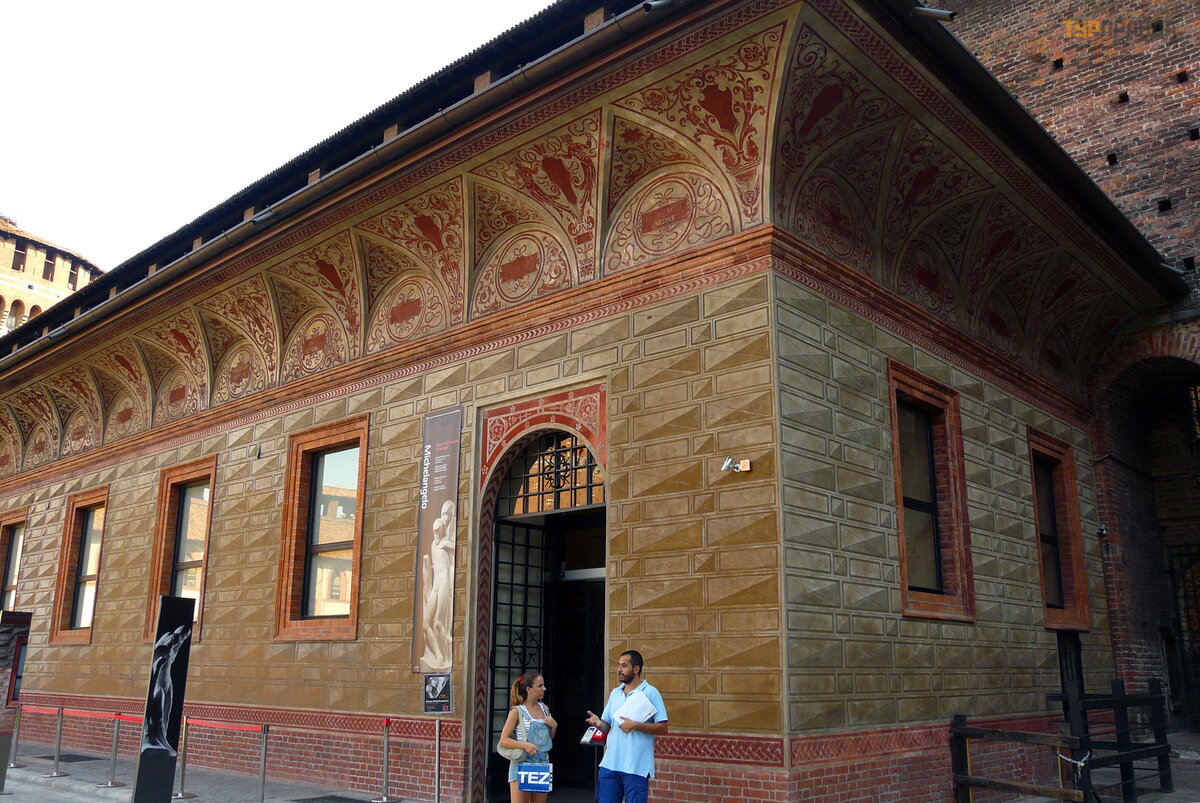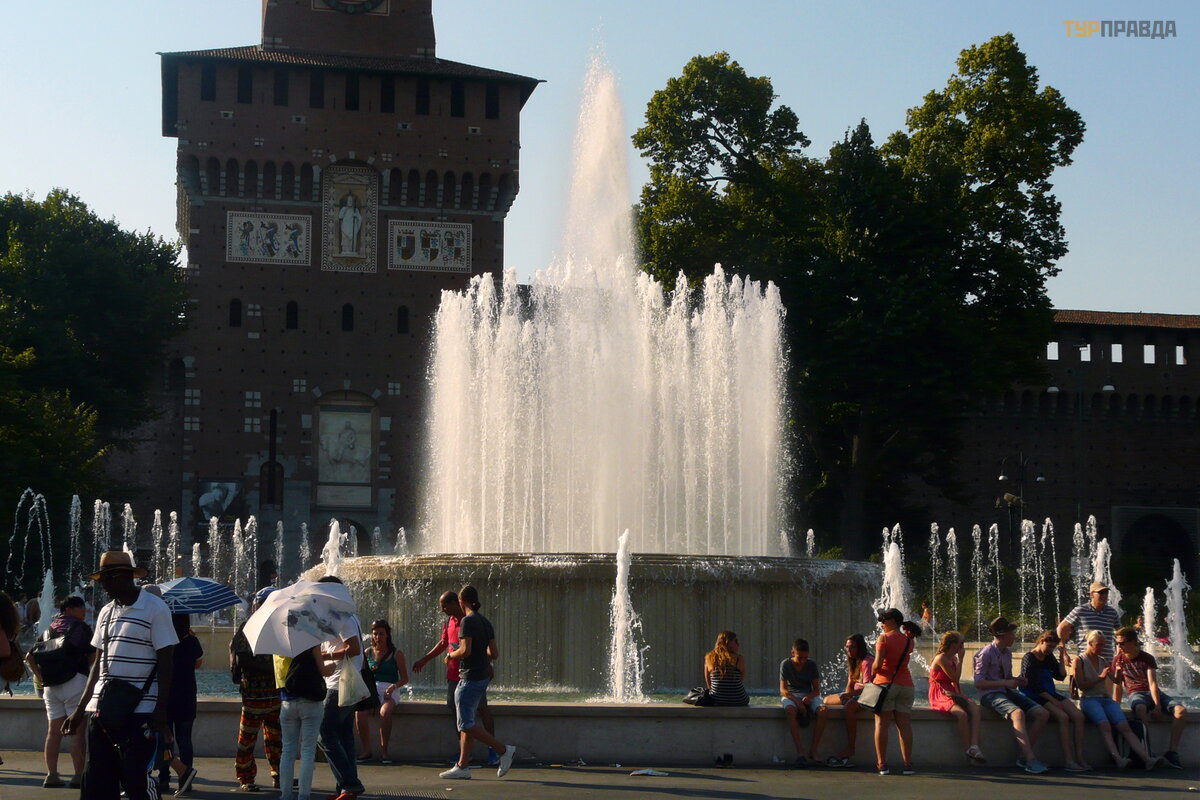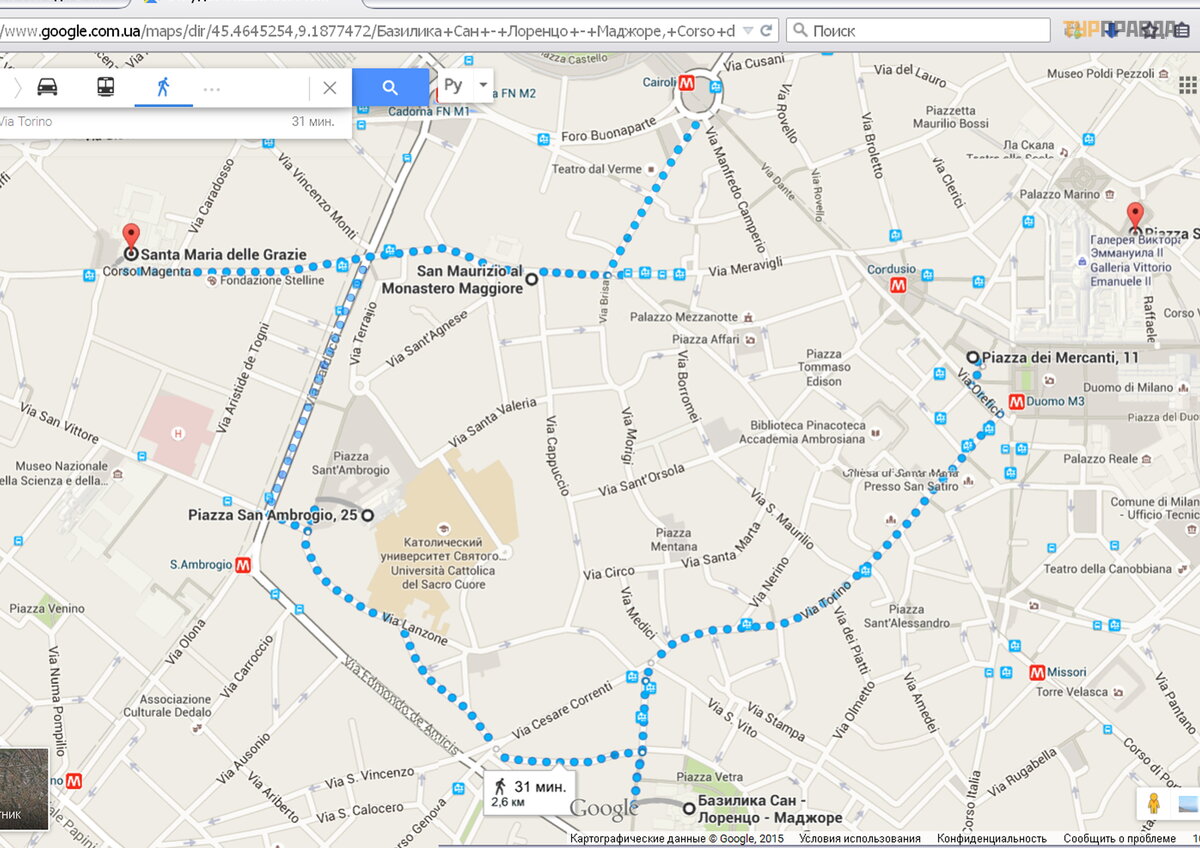One day in Milan. Completion
First part here >>>
Second part here >>>
Next we head to Via Carducci (Via Carducci) - at the intersection with Via San Vittore there is an interesting building that I saw in the photographs. And now I want to see him live. Cova Castle (Castello Cova), which, due to its shape, reminiscent of a medieval fortress, was nicknamed "castle", was built for the Cova family under the leadership of Adolfo Coppede in 1910. And this peculiar architectural style, combining Liberty and Historical Mannerism, became known as the “Coppede style” (stile Coppede) in honor of the creation of the brothers Adolfo and Gino Coppede.
Via Carducci takes us to Corso Magenta. If you turn left and walk two blocks, you can reach the world famous church of Santa Maria delle Grazie (Santa Maria delle Grazie),
in the refectory of which is the famous fresco by Leonardo da Vinci "The Last Supper". And although only the plot has remained from the most - Leonard's - creation over more than 500 years of constant restorations (and not always skillful), this does not prevent the fresco from remaining the object of a fanatical desire for those who want to see it.
T. Since I was not attracted by the need to be tied to a certain time (session), then I did not try, by all means, to catch tickets to visit the fresco. But I really wanted to get into the church itself. However, by the time we got to Corso Magenta, the clock showed 17.30. We had a little more than an hour before our departure from Milan - our plane left Bergamo at nine in the evening. And there was also the Sforza Castle in the plans (our two companions were in Milan for the first time). And there were plenty of impressions from the already visited churches. Therefore, Santa Maria delle Grazie remained for the next voyage to Milan. : )
And we turned right. . .
On Magenta Avenue there is a church San Maurizio al Monastero Maggiore (San Maurizio al Monastero Maggiore), which I marked on the map back in Kyiv. And passing by, realizing that time was running out, she nevertheless suggested: “Girls, we’re still walking by, let’s look inside for at least 5 minutes. ” It didn't work for 5 minutes. Stunned by what we saw, we hung in it for 25 minutes…
The Church of San Maurizio (Chiesa di San Maurizio) and the adjoining cloister are the only remnants of Monastero Maggiore, the oldest and largest convent in the city, built between the 8th and 9th centuries.
The peculiarity of the church is that at first you find yourself in a small square room, completely covered with magnificent frescoes. Standing with your mouth open and looking at them, you suddenly notice with peripheral vision that a small, barely noticeable door has opened on the left in one of the niches.
Spurred on by curiosity, you dive through this door and find yourself in an equally stunning huge room, also luxuriously decorated with murals. And in the center there are also huge wooden choir stalls (XVI century). It turns out that the church, the construction of which began in 1503 on the site of an earlier one, has a nave divided by a wall into two parts. The first room accessible from the street was for the faithful. The second, connected to the rest of the building, is for the nuns.
Now the Archaeological Museum with Roman, Etruscan and Lombard departments is located in the former monastery of San Maurizio.
An amazing place! Here, just like in the Basilica of St. Ambrose, unique treasures are hidden behind a discreet facade. The best masters of Lombardy worked on the interior of the cathedral - the frescoes of the 16th century were mostly painted by Bernardo Luini, one of the outstanding artists of Milan, and his students. You will not find a single empty space here - every centimeter from floor to ceiling is decorated with patterns, ornaments, scenes from the Gospel and the lives of saints.
The Church of St. Maurizio was the biggest discovery in Milan for us.
And the end of our walk around Milan was the Sforza Castle.
The castle, which was part of the city's fortifications and the key to mastering Milan, in the course of history repeatedly passed from one power to another and, accordingly, it was either destroyed or restored.
The construction of Castello Sforzesco(Castello Sforzesco) (1386) was conceived by Galeazzo Visconti as a country palace-fortress and continued by the greatest of the Visconti - Gian Galeazzo, the one who began to build the Duomo . During the Ambrosian Republic (1457-1450), the townspeople repeatedly tried to destroy the castle as a "stronghold" of Visconti tyranny. However, in 1450, Duke Francesco Sforza not only restored the castle, but also completed the round towers and the square central one, which has become the hallmark of the castle in modern times. Gradually, the castle turned into the residence of the Sforza family. On the walls is the family coat of arms of the Visconti and Sforza families.
Artists and architects were invited to decorate Castello Sforzesco - among them were Donato Bramante and Leonardo da Vinci. Leonardo is said to have designed a system of underground corridors under the castle.
After the Dukes of Sforza, the castle was owned by the Spaniards, who, being magnificent fortifiers, began to rebuild it. Then the French. Napoleon, who conquered Milan, wanted to completely destroy it in order to pave a straight, like an arrow, road to Paris...
Today, the Sforzesco Castle houses several museums (the Archaeological Museum, the Reunification Museum, musical instruments, dishes and a number of others) and a library. The last, unfinished work of Michelangelo, the Pieta Rondanini, is also kept here.
After the unification of Italy, Castello Sforzesco lost its military status and was transferred to the city. At the end of the 19th, one of the largest parks in Milan, Parco Sempione, was laid out on part of its territory.
Near the Sforza Castle, another popular attraction in Milan is the fountain, which the Milanese call the "Wedding Cake". They say that it is worth throwing a coin here, and preferably two, and all your mental requests to the heavenly office about the betrothed or lady of the heart will certainly be fulfilled. At least for those who strongly believe in it. : )
And we say goodbye to Milan, hoping that not forever, that we will definitely return to this beautiful city. After all, there are still so many “treasures of Milan hidden in the depths of quarters”... It is impossible not to agree with these words of G. Morton. : ))
P. S. Map of our route
I really hope that my story will help someone get away from the traditional tourist route and look at Milan not only as a shopping center and Leonardo da Vinci frescoes, but also as a city with many places that keep ancient history and amazing objects timeless art…
